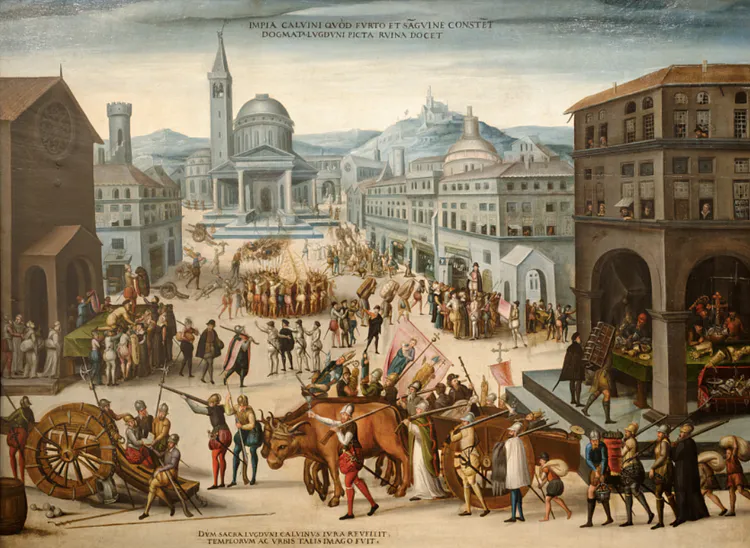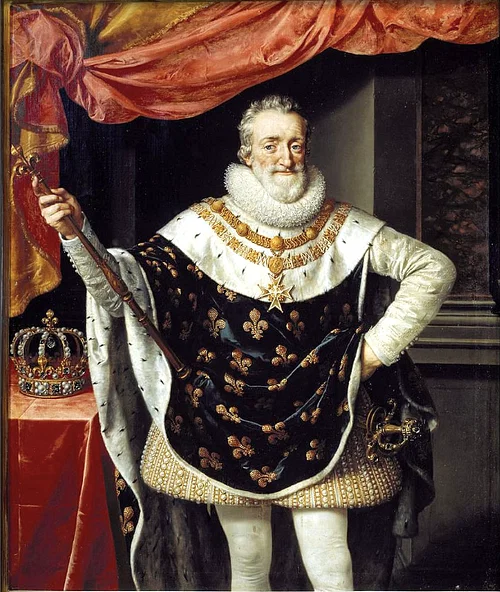 |
| Sack of Lyon by Calvinists |
 |
| Henri IV |
ShareTensions had been rising between Protestants and Catholics since 1534 but the religious and political situation worsened after Henry II (r. 1547-1559) died from an injury. His son, Francois II (Francis II, r. 1559-1560), crowned king at the age of 15, had been married to Mary, Queen of Scots (l. 1542-1587) who was the niece of Francis, Duke of Guise (l. 1519-1563) and his brother Charles, Cardinal of Lorraine (l. 1524-1574). Although Francis II was of age to rule on his own, his mother, Catherine de ‘Medici (l. 1519-1589) encouraged the Guise brothers to assume control as Francis II was inexperienced and sickly.
The House of Guise, devoutly Catholic, then exercised the power behind the throne and were hostile to the efforts of the Huguenots (French Protestants) who were advancing their vision in France. In March 1560, a group of Huguenots tried to kidnap Francis II to remove him from the influence of the Guise brothers. The plot, known as the Amboise Conspiracy, was discovered and anyone thought to be involved, as well as over 1,000 other Huguenots, were executed. In retaliation, Huguenots began vandalizing Catholic churches and rising tensions led to the Massacre of Vassy in March of 1562, in which Catholics killed more Protestants, starting the first war.
Conflict continued, with periods of armed peace between hostilities, until 1598 when King Henry IV, recognizing that France would never accept a Protestant king, converted to Catholicism (allegedly, with the famous line, “Paris is well worth a Mass”). His Edict of Nantes (1598), granting rights to Protestants in France while maintaining Catholic sovereignty, ended the French Wars of Religion (which had cost approximately 4 million lives) but did not address the underlying tensions which continued to erupt throughout the next century. (Read more.)

















No comments:
Post a Comment